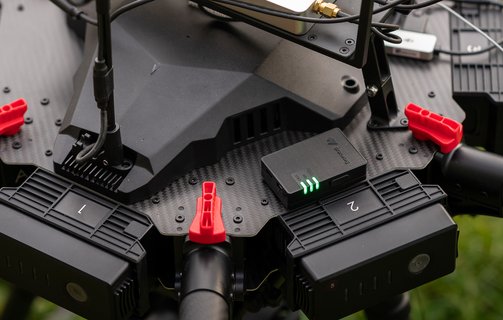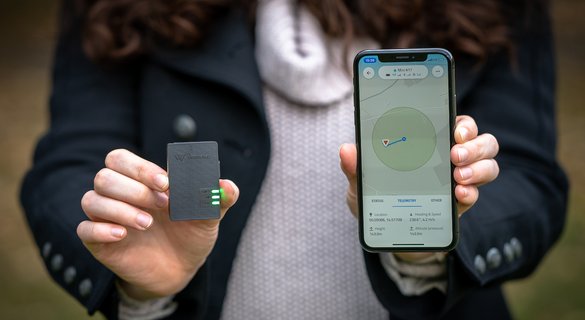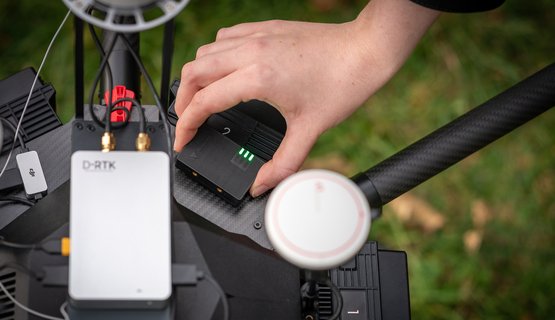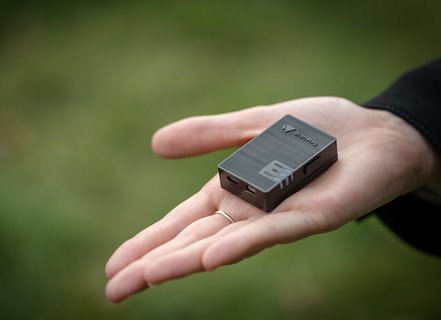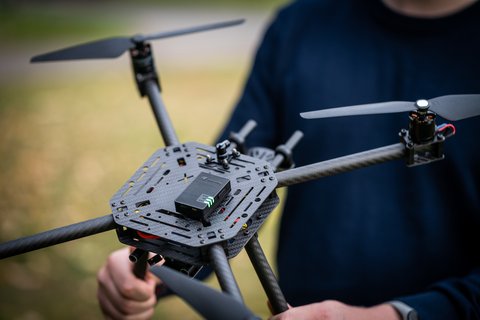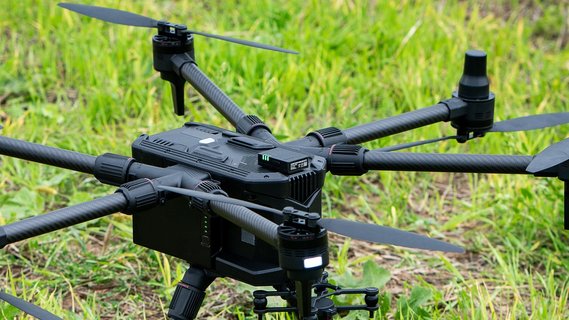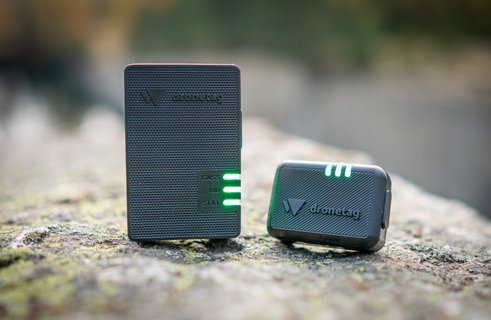Secure New Year's Eve AirspaceFree loan of drone detection tools for public safety teamsApply Now!
Dronetag Mini
Professional Remote ID device attachable to any drone
299 €Get now
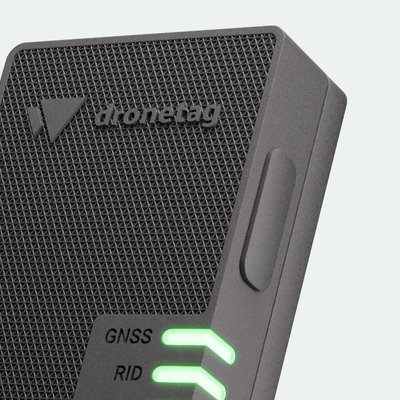
Remote Identification
Network Remote Identification
Dronetag Mini transfers your drone's position and identification to our cloud. By displaying the real-time data in our app Dronetag enables advanced drone operations and coordination of manned and unmanned traffic in the same airspace.
Direct (Broadcast) Remote Identification
Your drone's info is transmitted via Bluetooth to up to 3 km (1.86 miles). With our Direct Remote ID, you fulfil all the new regulation necessities, and you are free to fly & touch the sky!
Supported regions
European Union
ASD-STANUSA
ASTMWorldwide compliance
Flying in the EU or US region and looking for just bare minimum to be compliant with Remote ID?
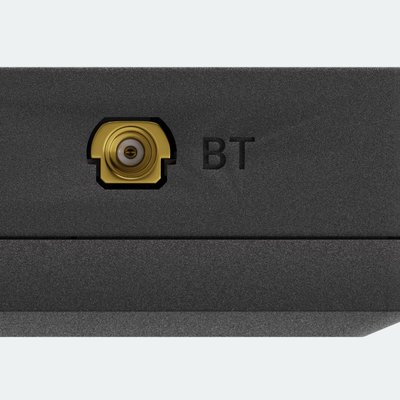
Smallest and lightest
Dronetag Mini is the smallest and lightest Remote ID device on the market
With the half size of a muesli bar, the weight of 32 g (1.1 oz), it offers everything you need to fly safe & compliant.
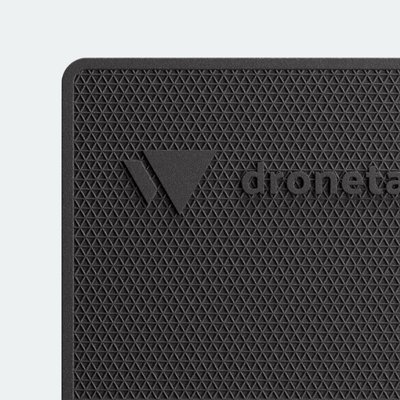
Independent, locked and with the longest battery life
Mini is attachable to any drone with a strong reclosable dual lock fastener (you can lift average drone by it). The device has internal GNSS, LTE and Bluetooth antennas and offers up to 14 hours of battery life.
Dronetag Mini
Make the drone visible to anyone, anywhere, anytime
Available on all devices
Dronetag App allows you to manage your devices, check the airspace zones, plan your flights, inspect airborne drones & flight plans and notify you about any airspace hazards.
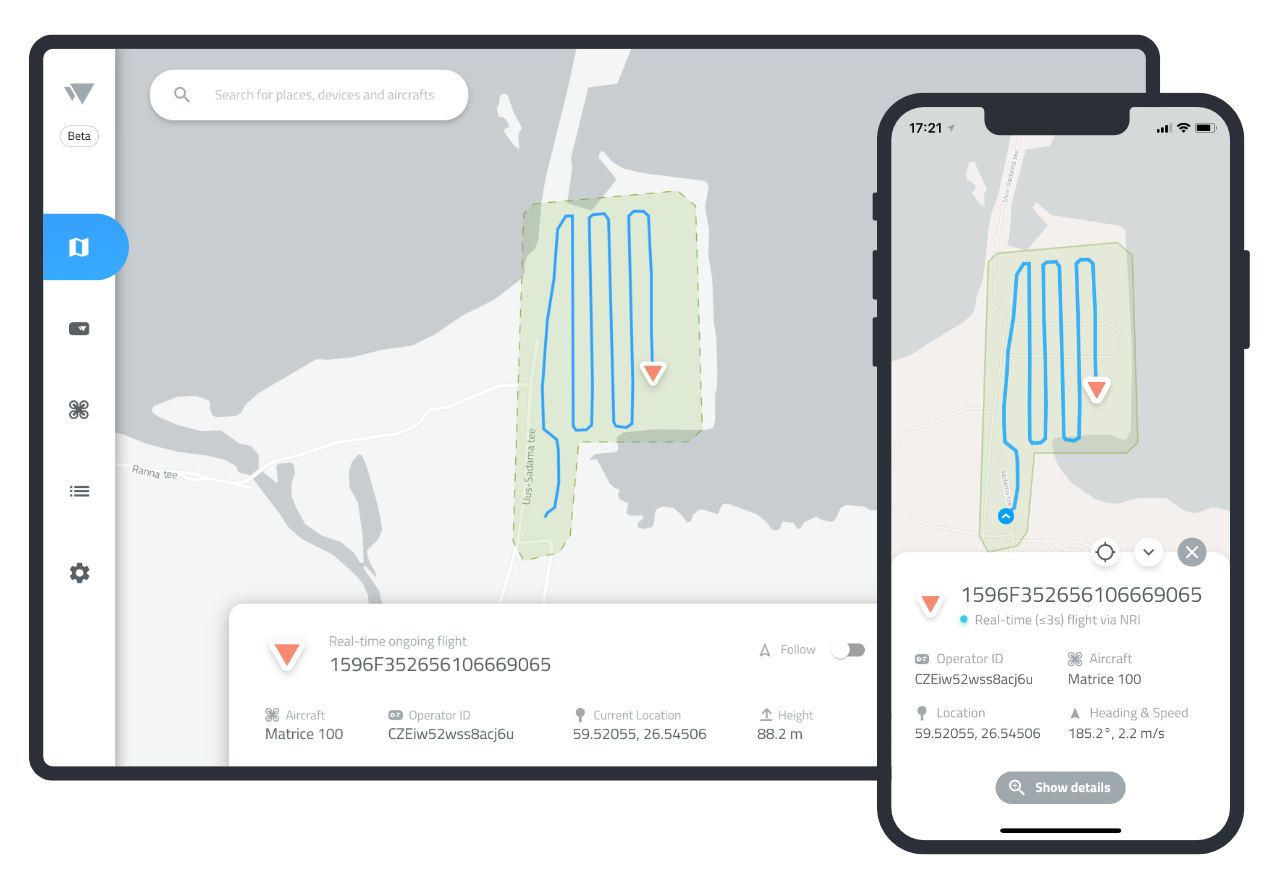
Pocket size technology
Compact but full of advanced technology
Weights only 32 grams and has half size of credit card

Features
Security at its best
Soldered chip SIM, firmware over the air updates, or DTLS encryption got you safe & secured.
Multi constellation GNSS receiver
Receiving signals from GPS, GLONASS, Galileo and SBAS for robust and reliable positioning.
Built according to the newest Remote ID standards
Compliant with Direct & Network Remote ID according to the prEN 4709-002 and ASTM F3411 Standards.
Internal LTE, Bluetooth and GNSS antennas
With an option to add external LTE and Bluetooth antennas for better signal reception.
Battery with up to 14 hours of endurance
You can also use your drone as a power source for carefree flights without the need for charging.
Take-off, landing and free-fall detection
Worry-free flight start and end. Mini warns other closed-by pilots about potential dangers.
Multiple sensors onboard
GNSS position estimation, pressure altitude measurement and motion detection via accelerometer.
MAVlink & DJI A3 support
Professional DJI and Pixhawk flight controllers integration via our EXT port to get onboard data.
Gallery
Specifications
- Cellular
- LTE-M and Narrowband IoT (NB-IoT)
- Cellular bands
- 3, 8, 20 for the EU and 2, 4, 12 for the US
- Short-range radio
- Bluetooth 2.4GHz
- Sensors
- GNSS, barometer, accelerometer
- Positioning
- GPS L1, GLONASS L1, Galileo E1, SBAS
- SIM card
- Chip SIM soldered on the mainboard
- Built-in Antennas
- Internal LTE, Bluetooth and GNSS
- Optional Antennas
- External LTE and Bluetooth via MMCX plugs
- External ports
- 3.3V extension connector and 5V Micro USB
- Battery
- LiPo 3.7V 500 mAh
- Battery life
- 8-14 hours (depending on the configuration)
- Charging
- 5V Micro USB
- Charging time
- 2 hours from a discharged state
- Average current consumption
- 50mA
- Maximum current consumption
- 1A
- Enclosure
- plastic
- Fastening mechanism
- 3M Dual-lock SJ4570
- IP rating
- IP43
- Operating temperature
- -20 °C to +60 °C (-4 °F to 140 °F)
- Dimensions
- 54x35x15 mm (2.1x1.3x0.6 in)
- Weight
- 32 grams (1.1 oz)
FAQ
What is a Remote ID and why do I need it?
Remote Identification (Remote ID), means that other parties can receive basic information about airborne drones digitally (in a similar way to general aviation). The example data that Remote ID drones transmit wirelessly during flight is the operator's registration number, drone serial number, and current position.
Europe and US are currently leading the way with the rest of the world following their trajectory. Remote ID aims to enable organized management of drone operations to ensure safe airspace.
What is the difference between the Direct and Network Remote ID?
There are two types of Remote IDs. The first is Direct (in some countries called Broadcast) Remote ID (DRI), in which the drone broadcasts data directly to nearby entities ranging from hundreds of meters to a few kilometers. The second type is Network Remote ID (NRI), where the drone sends the data via a cellular network to a central system where it can be accessed by other users.
Visit our Knowledge Base for more information.
When do I need DRI and when NRI? Do I need both?
The current European-wide drone regulation requires all drones flying in a Specific category to fulfil the DRI requirements starting 1st July 2022. The technology and protocol are already defined in prEN 4709-002. However, the situation about the NRI mandate is still a bit unclear. All we know is that it will be required to access U-space airspace starting January 2023.
In the USA, the FAA mandates pilots to use DRI modules from September 2023 and drone manufacturers to comply with it (to produce Standard Remote ID drones) starting December 2022.
To sum it up, having both DRI and NRI systems on your drone is better. Dronetag Mini is future-proof and will always fulfill the latest standards.
Can I use the Mini without the subscription?
Yes, you can. But keep in mind, that subscription is needed to use the full potential of the Mini. It covers the costs for the SIM tariff and SW platform. Our plan starts from a mere 15 EUR / USD per month per device + you get the first 2 months for free (see our plans). Moreover, we don't lock you into any contracts, so you can cancel the subscription at any time. If you don't like our subscription model, you can still use the Mini in our Free tier (Direct / Broadcast Remote ID functionality via Bluetooth), but without the NRI and other functionalities.
Can I use my own SIM card?
No. Dronetag Mini has a soldered chip SIM and we manage everything about the connectivity for you. There are very good safety, security and economic reasons for this. Concerning the safety, drone vibrations don't play well with common SIM slots and plastic SIMs. For security, we use our SIMs to authenticate against our cloud so the data we show are guaranteed and couldn't be easily spoofed. Lastly, the IoT cellular networks we use are not easily made available to the public, meaning you won't get the pricing as we have because of our higher demand. Using your own SIM would likely mean you would be locked into a long-term contract.
What countries are supported and are there any roaming restrictions?
Dronetag Mini is made in 3 different variants – A, K, and V. Each of those is compatible with multiple cellular networks in each country where we operate. With this strategy, we can offer our systems worldwide. To learn more about the supported countries, visit our Knowledge Base. However, you don't have to worry about choosing the right variant. We will send the device based on your location.
